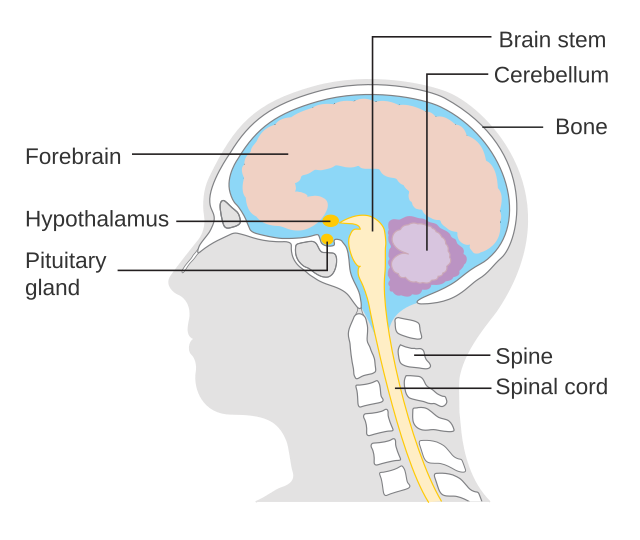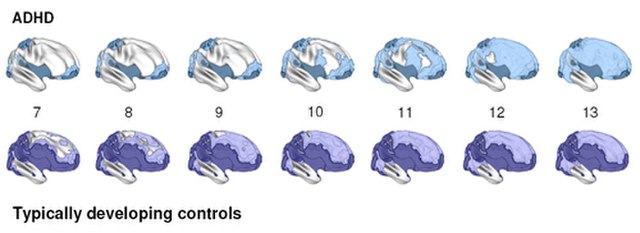In this post, I’d like to discuss the question, “What is ADD?” We are of course talking about Attention Deficit Disorder. We could extend it to Attention Deficit Hyperactivity Disorder (ADHD) as well. The two conditions are closely related. This is the first of two posts on the topic, however, for next week I plan to discuss exercises for ADD/ADHD. I will present two pictures of this condition so we can get a full picture of the condition.
What is ADD in Relation to Neurology?
Look at the following cross-section image of the brain.

In the front and around the top is the forebrain. This region, especially the area in the very front, is called the executive brain. This part develops over the course of childhood and teenage-hood. The middle region shown in blue (although its not labeled) is where the limbic system resides. It’s where all of our emotional reactions live, and it is the only part fully developed at birth. Think about an infant’s ability to cry to let you know they need something and you will understand why this part comes complete at birth. Finally, there is the cerebellum at the back. This is the part that coordinates our movement and balance. Like the forebrain, it also takes time to develop.
ADD/ADHD is seen as a weakness of the executive part of the brain which is supposed to coordinate and command the other two. You could say, it’s where the “self” lives. Now, imagine a horse-drawn carriage with a driver. The horses are powerful, and the driver must be strong enough to command them. What happens if he cannot? Then, the carriage will run in all sorts of directions that the driver has little to no control over. All that energy is essentially squandered. This is what it’s like to have ADD/ADHD.
Now, the horses may be very strong or in some cases even quite weak. That’s not so much the point as is the driver’s weak inability to command them. It’s not really about the horses. It’s about the driver. That is also why ADD/ADHD drugs work. They are stimulants which may seem counterintuitive. However, they stimulate the executive brain, kicking it into action so it can successfully drive the carriage.
What is ADD in Relation to Anthroposophy?
Anthroposophy speaks of 12 human senses in comparison to the commonly understood 5. I won’t go into a lengthy explanation for now, but they are:
- Senses of Will developed ages 0-7:
- Touch
- Life (the ability to sense wellness or illness)
- Movement (proprioception)
- Balance
- Senses of Feeling developed ages 7-14:
- Smell
- Taste
- Sight
- Temperature (also sometimes called “warmth” – this is the ability to sense not just physical but soul warmth and cold)
- Senses of Thinking developed ages 14-21:
- Hearing
- Speech (the ability to sense others’ experiences through their words)
- Thought (the ability to sense the meaning of others’ thoughts)
- Ego (the ability to sense the self of another)
From the curative education point of view, ADD/ADHD is a weakness in the sense of hearing. That is to say, the hearing is too wide open. Think about this sense. It’s one of the only one’s we can’t really shut off. If you don’t want to smell something, you can hold your nose. The same holds true for a number of the other senses. If you don’t really want to know what someone else is thinking, you can just ignore them. However, you’ll still hear them talking. Hearing can’t be so easily shut off.
What happens when one is extra-sensitive here? In a word: distraction. Yet, the story doesn’t end there, for each of these sense is related to a sister-sense. If we fold the form over on itself, we find these correlations:
- Touch – Ego
- Life – Thought
- Movement – Speech
- Balance – Hearing
- Smell – Temperature
- Taste – Sight
The lower sense (on the left) serves as the basis for developing the higher sense (on the right). Therefore, we see that the sense of balance is the basis for developing the sense of hearing properly. Knowing this gives us a clue to how we might remedy ADD/ADHD, and we will explore that next week!


Leave a Reply
You must be logged in to post a comment.